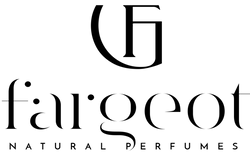Ambergris and Natural Alternatives for Musk and Fixative in Perfumes

So, what is Ambergris?
Ambergris is a solid and waxy substance produced in the intestines of a type of whales called the sperm whale.
Sperm whales expel Ambergris through their rectum like normal defecation however they may expel larger lumps through their mouths. Ambergris floats in the sea where it can be collected or eventually gets washed up onto the shore. The lumps can also be found in the digestive tract of dead sperm whales.
As it ages, Ambergris develops a musky, earthy and sweet aroma highly valued in perfumery. But its reputation in perfumery doesn’t end here, it is highly regarded as a fixative, which gives perfumes long-lasting attributes.
Ambergris is scarce. It is hard to be spotted when floating in the middle of the ocean and can take years to be washed up onto the shore. The whaling industry has been prosperous in the past and the hunt of sperm whales for their ambergris (among other things) has made the species vulnerable and endangered. Even though the International Whaling Commission considers ambergris as a waste product (hence not illegal to collect when excreted naturally), many countries, including Australia, have banned ambergris as an extra step towards whale protection.
Perfumers nowadays work with a chemical alternative to ambergris called Ambroxide or Ambroxan to use as fixative.
Coming from our brand's philosophy, such ingredients are problematic as they do not tick all the boxes of being vegan, cruelty-free and natural.
Some natural alternatives in perfumes
Benzoin Resin
This resin is extracted from the bark of a certain family of trees called Styrax. Beside being used in perfumery, Benzoin resin is also popular in incense making as well as flavouring some food and beverages. Brown in colour, its smell is close to vanilla. Used as a fixative in perfumes, it slows the dispersion of essential oils into the air.
Oakmoss
Oakmoss is actually a fungus that grows on the trunk and branches of oak trees. Its smell is woody, earthy and tenacious, which makes it a strong base note and fixative in perfumery. It blends well with most essential oils, especially ylang-ylang, and lingers on the skin or clothes for long after application.
Used in: Vici, Ares, Kenshō
Sandalwood
Mindfully extracted from slow-growing trees, Sandalwood has the reputation of being one of the most expensive woods in the world. But it is truly worth it as its deep and sweet woody scent comes in with double benefits. It is not only a great base note to develop a perfume around but it also harbours long-lasting attributes.
Used in: Vici, Ares, Rêveuse, Nocturne
Vanilla
We are all familiar with what vanilla smells (and taste) like. Sweet, warm and bold, vanilla is extracted from the beans of the vanilla orchid and makes another popular base note in perfumery. Similar to Benzoin Resin, it is also known for its long-lasting power.
Used in: Kenshō, Rêveuse
Ambrette
Not only Ambrette has the reputation of improving blood circulation and relieving aches, it is also known as the ultimate natural alternative to animal musk. It is even known under the names musk mallow or musk okra. Ambrette is a seed from a type of hibiscus flower that comes with a heavy and musky smell with subtle floral undertones. It is also often described as “white musk” and in addition to its appeasing scent, it blends well with other oils and is very tenacious.
Used in: Ares

